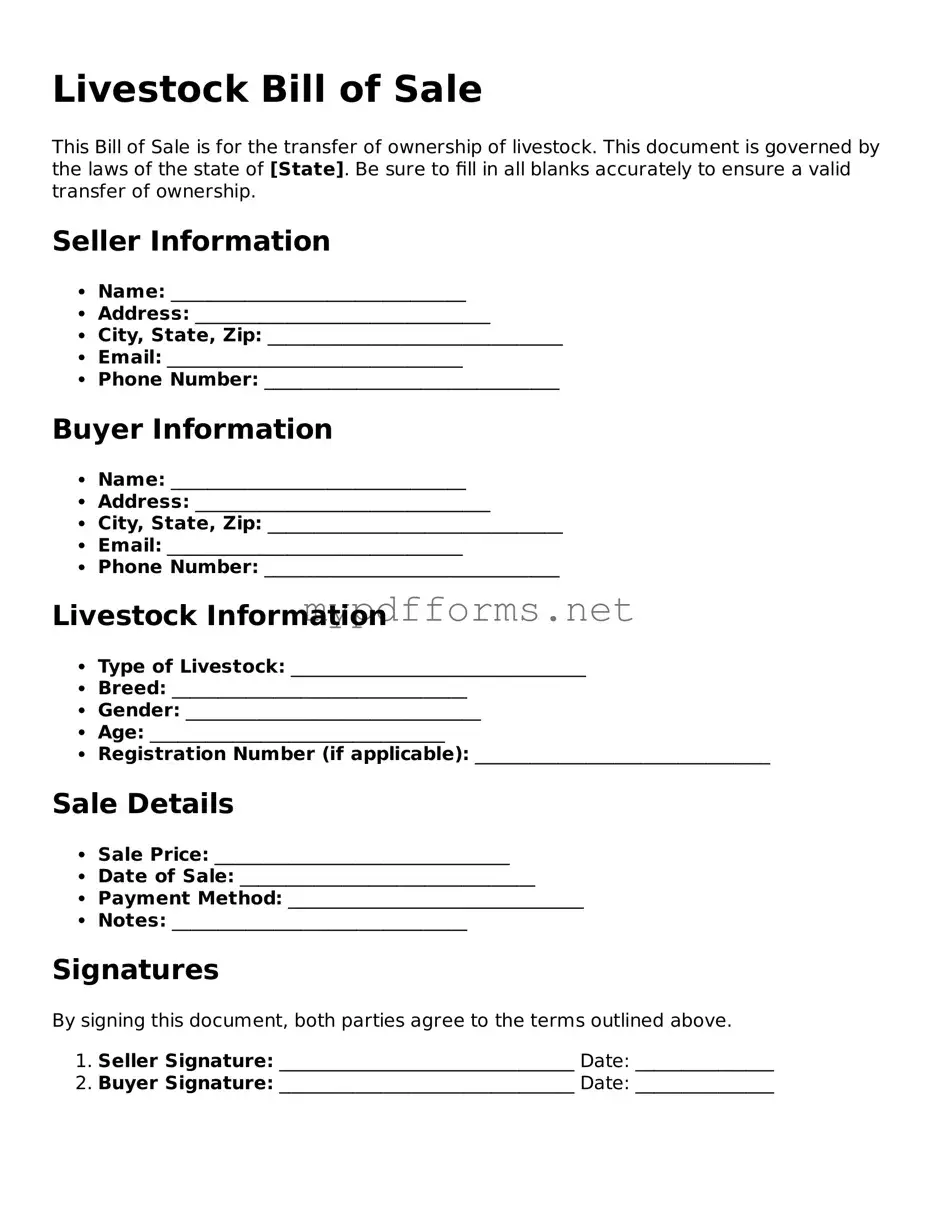The Livestock Bill of Sale form shares similarities with the Vehicle Bill of Sale. Both documents serve as proof of transfer of ownership from one party to another. Just as a Vehicle Bill of Sale details the specifics of the vehicle, including make, model, and identification number, the Livestock Bill of Sale outlines the particulars of the livestock being sold, such as breed, age, and health status. Each document typically includes the names and addresses of both the buyer and seller, ensuring that the transaction is clearly documented and legally binding.
In New Jersey, a variety of Bill of Sale forms cater to different transaction needs, ensuring that ownership is clearly documented and legally recognized. For those looking for customizable options, resources like NJ PDF Forms can be invaluable in creating specific forms for diverse transactions, whether they be for animals, vehicles, or machinery, underlining the importance of clear and precise documentation in every sale.
Another document comparable to the Livestock Bill of Sale is the Real Estate Purchase Agreement. This agreement lays out the terms of a property transaction, much like the Livestock Bill of Sale specifies the terms of livestock ownership transfer. Both documents detail the parties involved, the item being sold, and the agreed-upon price. They also often include conditions for the sale, such as inspections or warranties, ensuring that both parties understand their rights and responsibilities in the transaction.
The Equipment Bill of Sale is also similar in function to the Livestock Bill of Sale. This document is used when transferring ownership of equipment, whether it be agricultural machinery or other tools. Like the Livestock Bill of Sale, it includes essential information about the item, such as its condition and any warranties. Each document serves to protect the interests of both the buyer and seller, providing a clear record of the transaction and helping to prevent disputes in the future.
Finally, the Business Asset Purchase Agreement bears resemblance to the Livestock Bill of Sale, particularly when livestock is part of a business sale. This agreement details the assets being sold, which can include livestock, equipment, and other property. Similar to the Livestock Bill of Sale, it outlines the terms of the sale, including payment details and any conditions that must be met. Both documents ensure that the transfer of ownership is documented, protecting the rights of all parties involved in the transaction.
